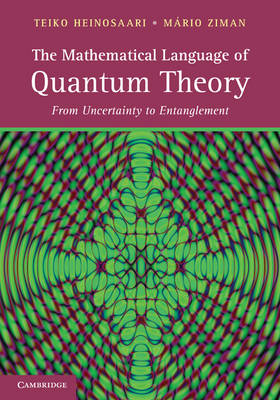: 2025
: 2024
: 2023
: 2022
: 2021
: 2020
: 2019
: 2018
: 2017
: 2016
: 2015
: 2014
: 2013
: 2012
: 2011
: 2010
: 2009
: 2008
: 2007
:
 17.10.2007
17.10.2007
QUROPE award QIPC Young Investigator Award 2007 has been awarded to Dr. Michal Horodecki and Dr. Michael Wolf. | more details| |
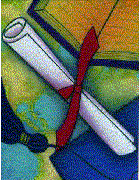 12.10.2007
12.10.2007
Diplomové práce 2007 1. Univerzálny kvantový preparátor 2. Porovnávanie kvantových meracích prístrojov 3. Kvantová teória s dekoherenciou 4. Dynamika kvantového previazania 5. Dynamika otvorených kvantových systémov 6. Kvantové kráčania na grafoch 7. Kvantové pamäte | more details (in Slovak) | |
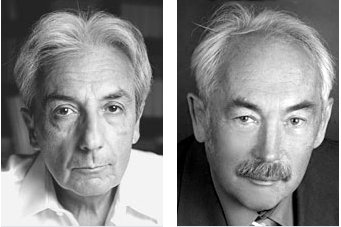 9.10.2007
9.10.2007
Physics Nobel Prize 2007 awarded to Albert Fert (Universite Paris-Sud, Paris, France) and Peter Grünberg (Forschungszentrum Jülich, Germany) for the discovery of Giant Magnetoresistance. | webpage | |
 25.9.2007
Lectures on advanced quantum theory
25.9.2007
Lectures on advanced quantum theory
lecturers: Teiko Heinonen, Mario Ziman time: Thursdays 10:30 Sylabus: 1. Hilbert space formalism, 2. Convex structure of states, 3. Entanglement, 4. Observables, 5. Operations, 6. Instruments, 7. Time dynamics |
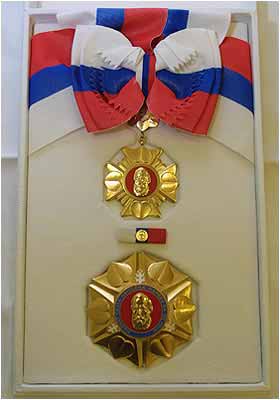 31.8.2007
31.8.2007
Prof. Vladimír Bužek awarded a State Medal of Ľudovít Štúr of the 1st class In the occassion of Slovak Constitution Day the president of Slovakia (Ivan Gašparovič) awarded State Medals. Prof. Bužek was among the laureates for his outstanding order of merit in the area of science and research. Congratulations! |
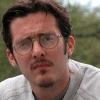 1.6.2007
1.6.2007Mgr. Marián Roško has left the group. |
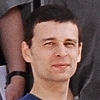 1.4.2007
1.4.2007Dr. Peter Štelmachovič has left the group. |
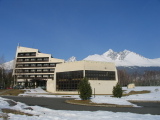 21.6.2007
21.6.2007
Autumn Student School on Mathematical Physics The aim of the School (Stara Lesna, 22-27th September 2007) is to present, in review lectures based on simple examples, the mathematical principles of modern physical theories and also to give the diploma and PhD students an opportunity to present the results of their research work in 20 minutes contributed talk. | webpage | |
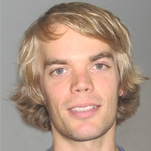 7.5.2007
7.5.2007Dr. Teiko Heinonen from Finland joined our group after finishing his PhD studies in Turku University. |
 21.3.2007
21.3.2007
CEQIP 2007 4th Central European Quantum Information Processing Workshop organized in Valtice, capital of wine, 24.06-27.07.2007. Transportation from Budmerice meeting will be provided. | webpage | |
 19.3.2007
19.3.2007
Identifying quantum states and operations: theory and applications The conference celebrating the 60th birthday of Janos Bergou. Organized in Budmerice chateaux, 20-24.06.2007. | webpage | |
 7.3.2007
7.3.2007
QGATES among finalists for Descartes Prize for research Three projects were awarded and five projects were recongnized as finalists. Our former project QGATES was one of them. The aim of this project is to exploit features of quantum mechanics for breakthroughs in information processing. This project involves 13 research groups from United Kingdom, France, Germany, Austria, Spain and Slovakia. See details |
 13.2.2007
13.2.2007
Orion - first quantum computer? Reserachers in D-wave system company from Canada are claiming they developed the first quantum computer working with 16 qubits. Indeed a hot scientific news that showed up in press around the globe. Unfortunately, the demonstration of this achievement is not scientifically very clear and lot of doubts about the presented result remain. Read original news and some critical veiwpoints. |
 8.2.2007
8.2.2007
physics.sk A new webpage containing lot of information about the physics in Slovakia. http://www.physics.sk/ |
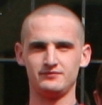 31.12.2006
31.12.2006Dr. Derek Mc Hugh have finished his postdocrotal stay and left our group. |
 30.11.2006
30.11.2006
When non-Gaussian states are Gaussian: Generalization of nonseparability criterion for continuous variables by Derek McHugh, Vladimír Bužek, and Mario Ziman published in Phys. Rev. A 74, 050306(R) (2006) (4 pages) | pdf file |. We present a class of non-Gaussian two-mode continuous-variable states for which the separability criterion for Gaussian states can be employed to detect whether they are separable or not. These states reduce to the two-mode Gaussian states as a special case. |
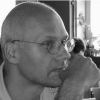 13.11.2006
13.11.2006
V.Bužek: "La Gaya Scienza" This "controversary" talk on enjoyment based on scientific discoveries vs. boring but necessary science administration work will given by Prof. Vladimír Bužek for Learning Society of Slovak Academy of Sciences. Date: 22.november 2006 (17:00) Place: seminar room of Institute for experimental onkology (Vlárska 7, Bratislava) |
 28.10.2006
28.10.2006
Quantum voting and privacy protection: first steps Principles of quantum mechanics can be used to protect privacy in the anonymous transmission of information integral to voting by secret ballot. Mark Hillery is reporting on recent results in SPIE Newsroom. |
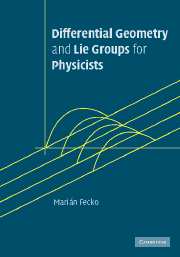 20.10.2006
20.10.2006
Differential geometry and Lie groups for physicists by Marián Fecko Cambridge University Press (2006) Differential geometry plays an increasingly important role in modern theoretical physics and applied mathematics. This textbook gives an introduction to geometrical topics useful in theoretical physics and applied mathematics, covering: manifolds, tensor fields, differential forms, connections, symplectic geometry, actions of Lie groups, bundles, spinors, and so on. Written in an informal style, the author places a strong emphasis on developing the understanding of the general theory through more than 1000 simple exercises, with complete solutions or detailed hints. The book will prepare readers for studying modern treatments of Lagrangian and Hamiltonian mechanics, electromagnetism, gauge fields, relativity and gravitation. Differential Geometry and Lie Groups for Physicists is well suited for courses in physics, mathematics and engineering for advanced undergraduate or graduate students, and can also be used for active self-study. The required mathematical background knowledge does not go beyond the level of standard introductory undergraduate mathematics courses. |
 04.10.2006
04.10.2006
Nobel Prize for Physics 2006 John C.Mather (NASA, Greenbelt, USA) and George F.Smoot (Univ. of California, Berkeley, USA) share this year Nobel prize for their discovery of the blackbody form and anisotropy of the cosmic microwave background radiation. |
 03.10.2006
03.10.2006
Entanglement, purity, and energy: Two qubits versus two modes by Derek McHugh, Mário Ziman, and Vladimír Bužek published in Phys. Rev. A 74, 0423903 (2006) (13 pages) | pdf file |. We study the relationship between the entanglement, mixedness and energy of two-qubit and two-mode Gaussian quantum states. We parametrize the set of allowed states of these two fundamentally different physical systems using measures of entanglement, mixedness and energy that allow us to compare and contrast the two systems using a phase diagram. This phase diagram enables one to clearly identify not only the physically allowed states, but the set of states connected under an arbitrary quantum operation. We pay particular attention to the maximally entangled mixed states (MEMS) of each system. Following this we investigate how efficiently one may transfer entanglement from two-mode to two-qubit states. |
 03.10.2006
03.10.2006
Quantum programmable processors by Vladimír Bužek, Mark Hillery, Mário Ziman, and Marián Roško published in Quantum Information Processing 5, 313-420 (2006) | pdf file |. A quantum processor is a device with a data register and a program register. The input to the program register determines the operation, which is a completely positive linear map, that will be performed on the state in the data register. We develop a mathematical description for these devices. We generalize the concept of quantum programmable processors and we propose programmable measurement devices. |
 01.09.2006
01.09.2006
Young European Physicists meeting 11.12.-15.12.2006 Budmerice chateaux, Slovakia The registration is now open. Early regitration deadline : 10.10.2006 | http://www.quniverse.sk/conf/yep2006/ | |
 01.09.2006
01.09.2006
by Martin Plesch, Mario Ziman, Vladimir Buzek, and Peter Stelmachovic published in Open systems and information dynamics 13, 255-262 (2006) (9 pages) | pdf file |. Abstract When standard methods of process (black-box) estimation are applied straightforwardly then it may happen that some sets of experimental data result in unphysical estimations of the corresponding channels (maps) describing the process. To prevent this problem, one can use the method of maximum likelihood (MML), which provides an efficient scheme for reconstruction of quantum channels. This scheme always results in estimations of channels that are fully physical, e.g. the corresponding maps are linear, positive and completely positive. To show this property, we use the MML for a derivation of physical approximations of truly unphysical operations. In particular, we analyze physical approximations of the universal-NOT gate, the quantum nonlinear polarization rotation and the map [rho]->[rho^n]. Given the result of MML, we examine retrospectively the quality of the experiment. Depending on the resulting value of the MML functional we can determine (physical) consistency of the input data. |
 09.08.2006
09.08.2006
Quantum walks with random phase shifts by Jozef Košík, Vladimír Bužek and Mark Hillery published in Phys. Rev. A 74, 022310 (2006) (9 pages) | pdf file |. We investigate quantum walks in multiple dimensions with different quantum coins. We augment the model by assuming that at each step the amplitudes of the coin state are multiplied by random phases. This model enables us to study in detail the role of decoherence in quantum walks and to investigate the quantum-to-classical transition. We also provide classical analog of the quantum random walks studied. Interestingly enough, it turns out that the classical counterparts of some quantum random walks are classical random walks with a memory and biased coin. In addition random phase shifts "simplify" the dynamics (the cross-interference terms of different paths vanish on average) and enable us to give a compact formula for the dispersion of such walks. |
 28.06.2006
28.06.2006
Programmable quantum-state discriminators with simple programs by János A. Bergou, Vladimír Bušek, Edgar Feldman, Ulrike Herzog and Mark Hillery published in Phys. Rev. A 73, 062334 (2006) (17 pages) | pdf file |. We describe a class of programmable devices that can discriminate between two quantum states. We consider two cases. In the first, both states are unknown. One copy of each of the unknown states is provided as an input, or program, for the two program registers, and the data state, which is guaranteed to be prepared in one of the program states, is fed into the data register of the device. This device will then tell us, in an optimal way, which of the templates stored in the program registers the data state matches. In the second case, we know one of the states while the other is unknown. One copy of the unknown state is fed into the single program register, and the data state which is guaranteed to be prepared in either the program state or the known state, is fed into the data register. The device will then tell us, again optimally, whether the data state matches the template or is the known state. We determine two types of optimal devices. The first performs discrimination with minimum error, and the second performs optimum unambiguous discrimination. In all cases we first treat the simpler problem of only one copy of the data state and then generalize the treatment to n copies. In comparison to other works we find that providing n>1 copies of the data state yields higher success probabilities than providing n>1 copies of the program states. |
 01.06.2006
01.06.2006
QAP Focus meeting: Quantum process estimation 27.9.-1.10.2006 Budmerice chateaux, Slovakia The registration to workshop on quantum process estimations and tomography methods is now open. Deadline : 15.06.2006 | http://www.quniverse.sk/conf/quprest06/ | |
 10.05.2006
10.05.2006
CONQUEST Midterm Review Meeting The review meeting of the project CONQUEST within the European 6th Framework Programme coordinated by Prof. V.Bužek will take place in Hotel Marrol's (Bratislava) on days 7.-8.6.2006. | http://www.quniverse.sk/conquest/ | |
 07.03.2006
07.03.2006
CEQIP 2006 3rd Central European Quantum Information Processing workshop will be held in Znojmo (Czech Republic) from 4th till 8th of May 2006. Invited speakers includes: Charles H.Bennett (IBM Research), Časlav Brukner (University of Vienna), Markus Grassl (University of Karlsruhe), Michal Horodecki (University of Gdansk), Philippe Jorrand (University of Grenoble), Jaewan Kim (KIAS Seoul), and Andreas Winter (University of Bristol). | http://www.quniverse.org/ceqip/ | |
 24.02.2006
24.02.2006Approximate programmable quantum processors by Mark Hillery, Mário Ziman and Vladimír Bužek published in Phys. Rev. A 73, 022345 (2006) (7 pages) | pdf file |. A quantum processor is a programmable quantum circuit in which both the data and the program, which specifies the operation that is carried out on the data, are quantum states. We study the situation in which we want to use such a processor to approximate a set of unitary operators to a specified level of precision. We measure how well an operation is performed by the process fidelity between the desired operation and the operation produced by the processor. We show how to find the program for a given processor that produces the best approximation of a particular unitary operation. We also place bounds on the dimension of the program space that is necessary to approximate a set of unitary operators to a specified level of precision. |
 11.01.2006
11.01.2006Entanglement-induced state ordering under local operations by Mário Ziman and Vladimír Bužek published in Phys. Rev. A 73, 012312 (2006) (4 pages) | pdf file | We analyze how entanglement between two components of a bipartite system behaves under the action of local channels of the form [ExI]. We show that a set of maximally entangled states is by the action of [ExI] transformed into the set of states that exhibit the same degree of entanglement. Moreover, this degree represents an upper bound on entanglement that is available at the output of the channel irrespective of what the input state of the composite system is. We show that within this bound the entanglement-induced state ordering is "relative" and can be changed by the action of local channels. That is, two states ρ1(in) and ρ2(in) such that the entanglement E[ρ1(in)] of the first state is larger than the entanglement E[ρ2(in)] of the second state are transformed into states ρ1(out) and ρ2(out) such that E[ρ2(out)]>E[ρ1(out)]. |
 10.01.2006
10.01.2006Towards quantum-based privacy and voting by Mark Hillery, Mário Ziman, Vladimír Bužek, and Martina Bieliková published in Physics Letters A 349, Issues 1-4 , pp 75-81 (2006) | pdf file |. The privacy of communicating participants is often of paramount importance, but in some situations it is an essential condition. A typical example is a fair (secret) voting. We analyze in detail communication privacy based on quantum resources, and we propose new quantum protocols. Possible generalizations that would lead to voting schemes are discussed. |
 01.01.2006
01.01.2006Dr. Derek Mc Hugh from Ireland joined our group. He came to Bratislava after finishing his PhD studies in National University of Ireland in Maynooth in the field of ion qubit implementations. |
 04.12.2005
04.12.2005Concurrence versus purity: Influence of local channels on Bell states of two qubits by Mário Ziman and Vladimír Bužek published in Phys. Rev. A 72, 052325 (2005) (9 pages) | pdf file |. We analyze how a maximally entangled state of two qubits (e.g., the singlet psis) is affected by the action of local channels described by completely positive maps E. We analyze the concurrence and the purity of states ρE=E⊗I[ψ]. Using the concurrence-versus-purity phase diagram we characterize local channels E by their action on the singlet state psis. We specify a region of the concurrence-versus-purity diagram that is achievable from the singlet state via the action of unital channels. We show that even the most general (including nonunital) local channels acting just on a single qubit of the original singlet state cannot generate the maximally entangled mixed states. We study in detail various time evolutions of the original singlet state induced by local Markovian semigroups. We show that the decoherence process is represented in the concurrence-versus-purity diagram by a line that forms the lower bound of the achievable region for unital maps. On the other hand, the depolarization process is represented by a line that forms the upper bound of the region of maps induced by unital maps. |
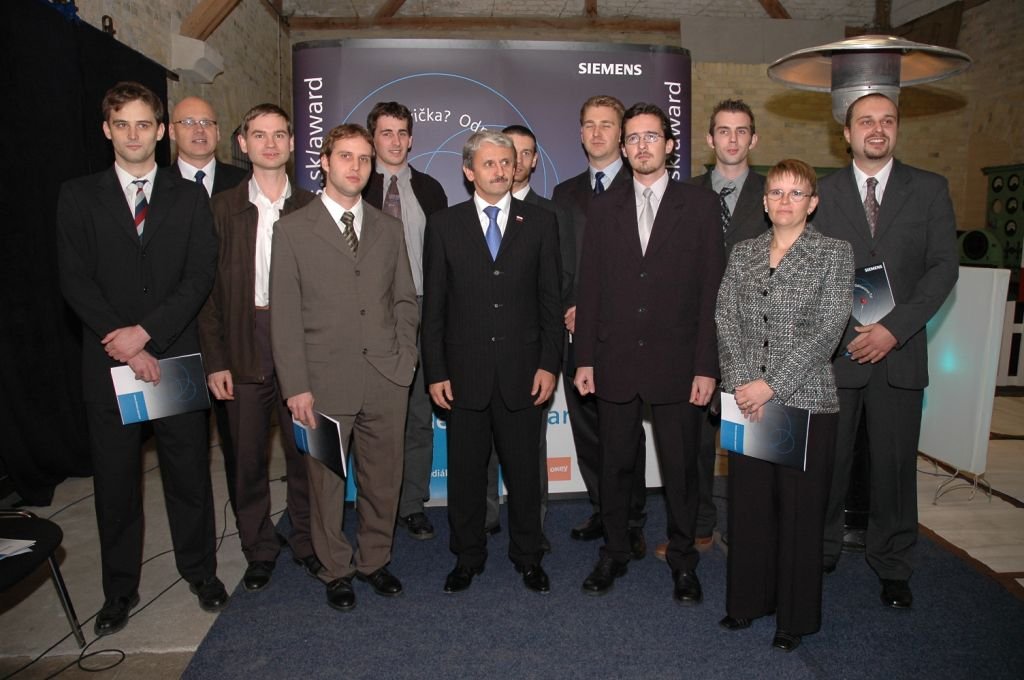 16.11.2005
16.11.2005Werner von Siemens Excellence Award. Our group (RCQI) was awarded the Siemens Excellence Award for the research work on Optimal quantum information processing. The TV report from the celebration can be seen on | http://www.ta3.com/ |. More information about the prize is available at | http://www.siemens.sk/. |
 08.11.2005
08.11.2005Slovenská veda vo svetovom kontexte V rámci Týždna slovenskej vedy bol hosťom televízie TA3 prof. Vladimír Bužek. spusti interview |
 14.10.2005
14.10.2005Entanglement swapping of noisy states: A kind of superadditivity in nonclassicality by Aditi Sen(De), Ujjwal Sen, Caslav Brukner, Vladimír Bužek and Marek Zukowski published in Phys. Rev. A 72, 042310 (2005) (10 pages) | pdf file | We address the question as to whether an entangled state that satisfies local realism will give a violation of the same after entanglement swapping in a suitable scenario. We consider such a possibility as a kind of superadditivity in nonclassicality. Importantly, it will indicate that checking for violation of local realism, in the state obtained after entanglement swapping, can be a method for detecting entanglement in the input state of the swapping procedure. We investigate various entanglement swapping schemes, which involve mixed initial states. The strength of violation of local realism by the state obtained after entanglement swapping is compared with the one for the input states. We obtain a kind of superadditivity of violation of local realism for Werner states, consequent upon entanglement swapping involving Greenberger-Horne-Zeilinger-state measurements. We also discuss whether entanglement swapping of specific states may be used in quantum repeaters with a substantially reduced need to perform the entanglement distillation step. Phys. Rev. A 72, 042310 (2005) (10 pages) | pdf file | |
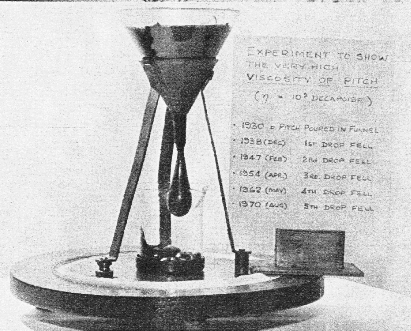 27.10.2005
27.10.2005Ig Nobel prize for Physics 2005 Awarded to John Mainstone and Thomas Parnell of the University of Queensland, Austalia, for patiently conducting and experiment that began in 1927, in which a glab of congealed black tar has been slowly, slowly drpping through a funnel, at a rate of approximately one drop every nine years. Last time (8th drop) fell at the end of November last year. The Pitchdrop experiment, European Journal of Physics, 198-200 (1984) |
 22.10.2005
22.10.2005Realization of positive-operator-valued measures using measurement-assisted programmable quantum processors by Mário Ziman and Vladimír Bužek published in Phys. Rev. A 72, 022343 (2005) (7 pages) | pdf file | We study possible realizations of generalized quantum measurements on measurement-assisted programmable quantum processors. We focus our attention on the realization of von Neumann measurements and informationally complete positive-operator-valued measures. Nielsen and Chuang [Phys. Rev. Lett. 79, 321 (1997)] have shown that two unitary transformations implementable by the same programmable processor require mutually orthogonal states. We show that two different von Neumann measurements can be encoded into nonorthogonal program states. Nevertheless, given the dimension of a Hilbert space of the program register the number of implementable von Neumann measurements is still limited. As an example of a programmable processor we use the so-called quantum-information distributor. |
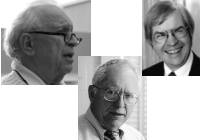 04.10.2005
04.10.2005Nobel prize for physics 2005 Today (4th October) the Nobel comittee has awarded 1/2 of the prize to Roy J. Glauber (from Harvard University Cambridge, MA, USA) for his contribution to the quantum theory of optical coherence, and 1/4 of the prize to John L.Hall (from University of Colorado, JILA; National Institute of Standards and Technology Boulder, CO, USA) and 1/4 of the prize to Theodor W.Hänsch (from Max-Planck-Institut für Quantenoptik Garching, Germany; Ludwig-Maximilians-Universität Munich, Germany) for their contributions to the development of laser-based precision spectroscopy, including the optical frequency comb technique. For more information visit http://nobelprize.org. |
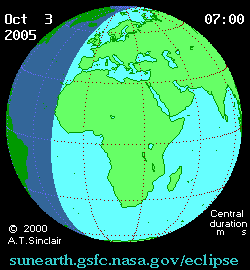 26.9.2005
26.9.2005Sun eclipse on Monday Oct 3rd. At 10:00 AM the shadow of the moon will partially hide the sun for observers located around Bratislava. Total eclipse will be in Spain and Africa. For more info about the event visit http://www.live-eclipse.org, or astro portal (in Slovak). |
 All (qubit) decoherences: Complete characterization and physical implementation
All (qubit) decoherences: Complete characterization and physical implementation
by Mário Ziman and Vladimír Bužek We investigate decoherence channels that are modeled as a sequence of collisions of a quantum system (e.g., a qubit) with particles (e.g., qubits) of the environment. We show that collisions induce decoherence when a bipartite interaction between the system qubit and an environment (reservoir) qubit is described by the controlled- U unitary transformation (gate). We characterize decoherence channels and in the case of a qubit we specify the most general decoherence channel and derive a corresponding master equation. Finally, we analyze entanglement that is generated during the process of decoherence between the system and its environment. Phys. Rev. A 72, 022110 (2005) (9 pages) | pdf file | |
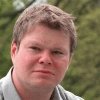 15.07.2005
15.07.2005Dr. Matyas Koniorczyk left the group. After his postdoctoral stay in RCQI he moved to University of Pecs. |
 6.6.2005
6.6.2005Movie from Solvay conference In 1927 the founders of quantum mechanics meet in 5th Solvay conference in Bruxelles. Twenty nine physicists came to discuss the topics 'Electrons and photons'. Seventheen of them were or became Nobel prize winners. Link to the movie. |
 Process reconstruction: From unphysical to physical maps via maximum likelihood
Process reconstruction: From unphysical to physical maps via maximum likelihood
by Mário Ziman, Martin Plesch, Vladimír Bužek and Peter Štelmachovič We show that the method of maximum likelihood (MML) provides us with an efficient scheme for the reconstruction of quantum channels from incomplete measurement data. By construction this scheme always results in estimations of channels that are completely positive. Using this property we use the MML for a derivation of physical approximations of unphysical operations. In particular, we analyze the optimal approximation of the universal NOT gate as well as the physical approximation of a quantum nonlinear polarization rotation. Phys. Rev. A 72, 022106 (2005) (5 pages) | pdf file | |
 Instability and Entanglement of the Ground State of the Dicke Model
Instability and Entanglement of the Ground State of the Dicke Model
by Vladimír Bužek, Miguel Orszag, and Marián Roško Using tools of quantum information theory we show that the ground state of the Dicke model exhibits an infinite sequence of instabilities (quantum-phase-like transitions). These transitions are characterized by abrupt changes of the bi-partite entanglement between atoms at critical values kappa j of the atom-field coupling parameter kappa and are accompanied by discontinuities of the first derivative of the energy of the ground state. We show that in a weak-coupling limit ( kappa_1 <= kappa <= kappa_2) the Coffman-Kundu-Wootters inequalities are saturated, which proves that for these values of the coupling no intrinsic multipartite entanglement (neither among the atoms nor between the atoms and the field) is generated by the atom-field interaction. We show that in the strong-coupling limit the entangling interaction with atoms leads to a highly sub-Poissonian photon statistics of the field mode. Phys. Rev. Lett. 94, 163601 (2005) [4 pages] | pdf file | |
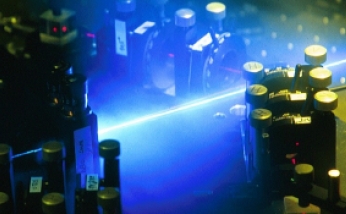 15.3.2005
15.3.2005Physics enlightnens the World: Slovak-Austrian Chain Link The first demostration of quantum key distribution over the country borders. State representatives of Austria and Slovakia will exchange a diplomatic note secured by laws of quantum mechanics. See you on April 19th at 20:00 pm in Slovak-Austrian border crossing Rusovce-Kitsee.|pdf file| |
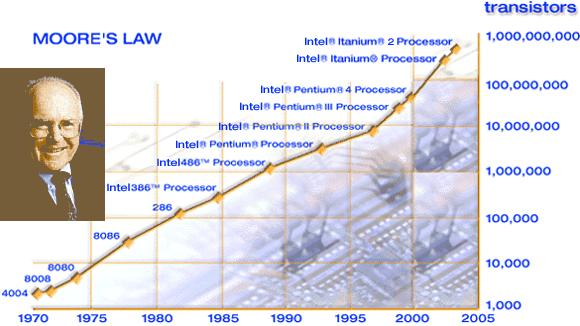 30.11.2004
30.11.2004Moore law In 1965 Gordon E. Moore made an observation that each 18 months the power of processors is doubled. Time extrapolation of this observation is called the Moore's law. This statement on the technology is one of the main driving force in the current scientific research and finally it leads us to the questions related with quantum computers. Surprisingly, in contradiction with many pesimists, the technology still evolves in agreement with these predictions. |
 10.10.2004
10.10.2004Nobel prize for physics 2004 The prize has been awarded for the discovery of asymptotic freedom in the theory of strong interaction to David J.Gross (Kavli Institute for Theoretical Physics,Santa Barbara, USA), H.David Politzer (California Institute of Technology, Pasadena, USA) and Frank Wilczek (Massachusetts Instyitute of Technology, Cambridge, USA). For more information visit official pages. |
 01.08.2004
01.08.2004Dr. Matyas Koniorczyk from Hungary joined our group. He moved to Bratislava after finishing his PhD studies in University of Pecs in the field of quantum optics. |


